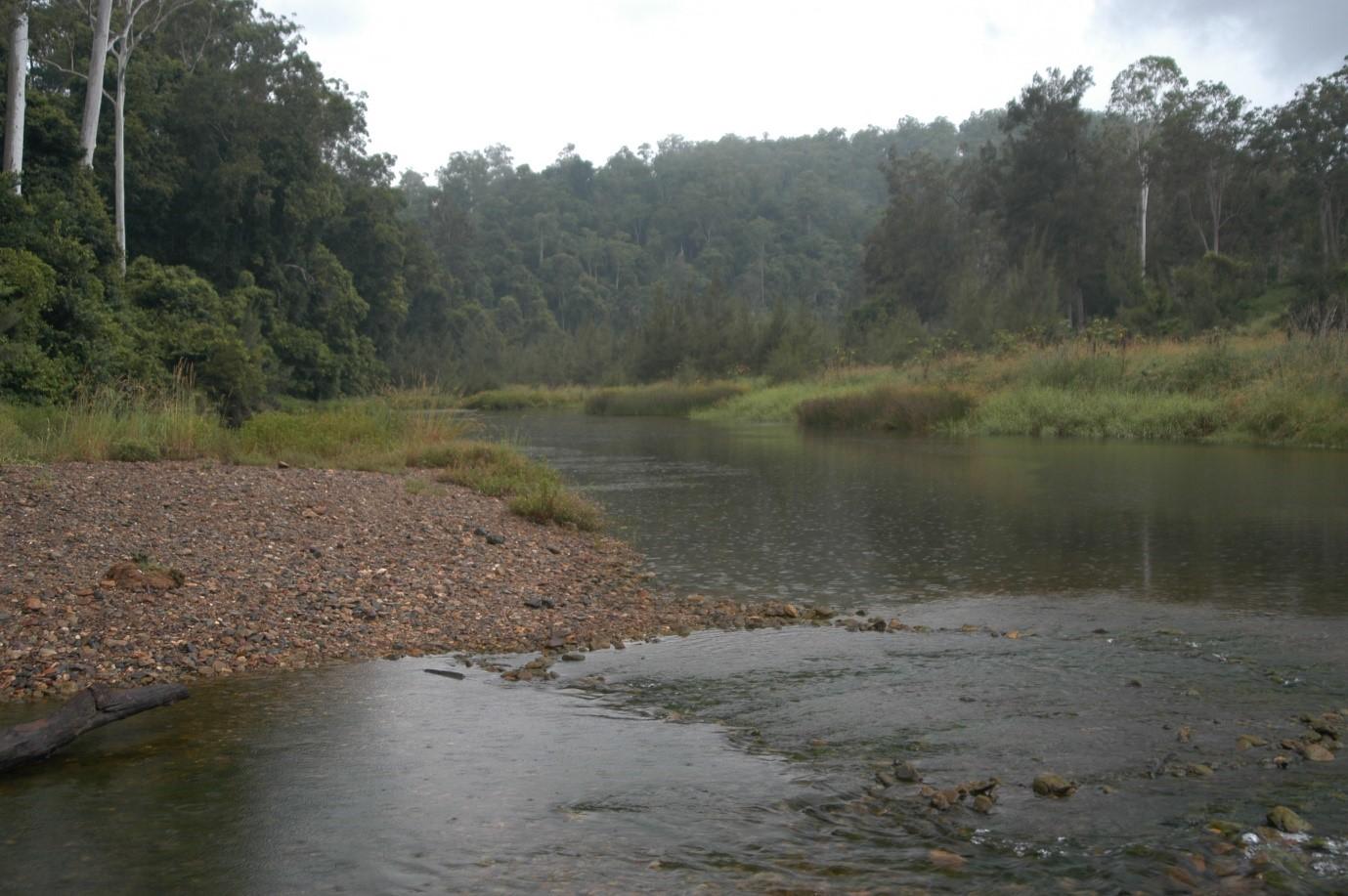Project start date: 01/02/2023
Project end date: 28/02/2026
NESP funding: $550,000 (GST-exclusive)
In many parts of eastern Australia, recent extreme weather events have caused severe droughts, heat waves, wildfires and floods. Coupled with habitat degradation and invasive species, these environmental disturbances pose increasing risks to the resilience and long-term survival of highly valued and threatened freshwater species and the integrity of critical wetland habitats. This presents major science challenges for effective threat management, habitat restoration and species recovery.
 Queensland’s Moonaboola (Mary River) is a hotspot for threatened freshwater species. Photo: Mark Kennard.
Queensland’s Moonaboola (Mary River) is a hotspot for threatened freshwater species. Photo: Mark Kennard.
This project aims to identify practical solutions for catchment-scale restoration and threatened-species recovery, with a focus on the Mary River (Moonaboola) catchment in south-east Queensland – a hotspot of threatened species that rely on freshwater and riparian habitats. These species include fish (Australian lungfish, Mary River cod, Oxleyan pygmy perch), turtles (Mary River turtle, white-throated snapping turtle), frogs (giant barred frog, wallum sedge frog), birds (Coxen’s fig parrot) and mammals (water mouse).
Crucially, the Mary River catchment is also home to passionate people involved in strong local organisations who want to save threatened species and achieve a resilient, sustainable and productive catchment.We’re taking an integrated approach to create new opportunities for the management of threatened aquatic species in the Mary River catchment, which will be transferable to other Australian ecosystems.
Key research areas
To address these challenges and improve knowledge, capacity and tools for management and recovery of threatened freshwater species and their critical habitats, we will work with government, catchment natural resource management groups, Traditional Owners and landholders by:
This 7-minute video – created by our partners at the Burnett Mary Regional Group – showcases the first comprehensive mapping of rare turtle and fish species along the Moonaboola (Mary River) in south-east Queensland. These species are facing multiple threats, including climate change.
This film features NESP Resilient Landscapes Hub scientists, including Professor Mark Kennard from Griffith University, who is leading the collaborative research project in the catchment.
You can also see the media release connected with this project on the Burnett Mary Regional Group’s news page.
Project leader
The project is being led by Professor Mark Kennard from Griffith University. This project will contribute to 2 cross-cutting initiatives:
Contact
For further information, contact m.kennard@griffith.edu.au or nesplandscapes@uwa.edu.au.
Research users
People